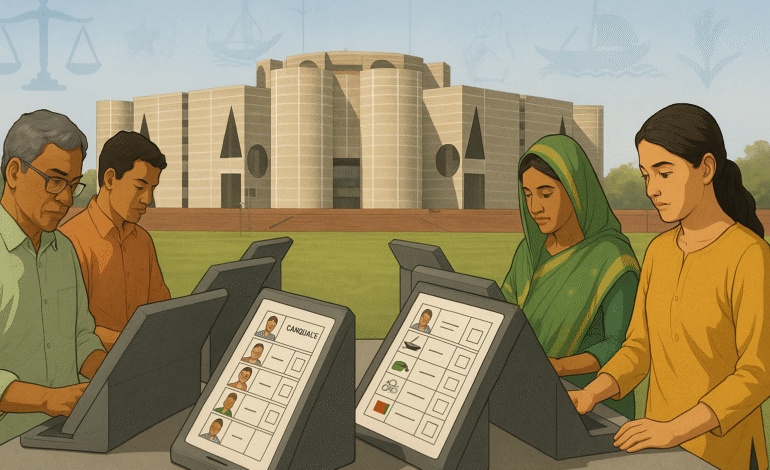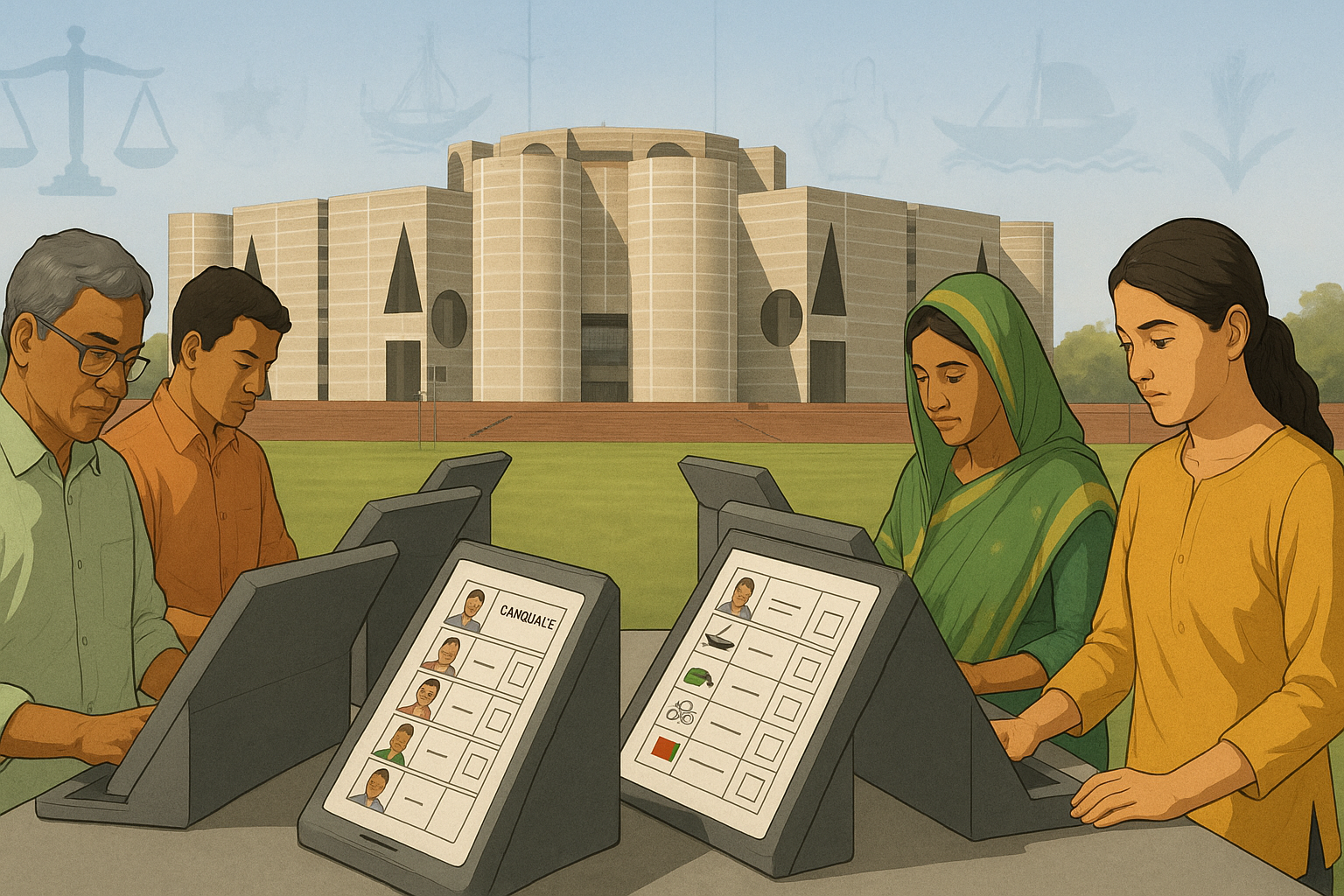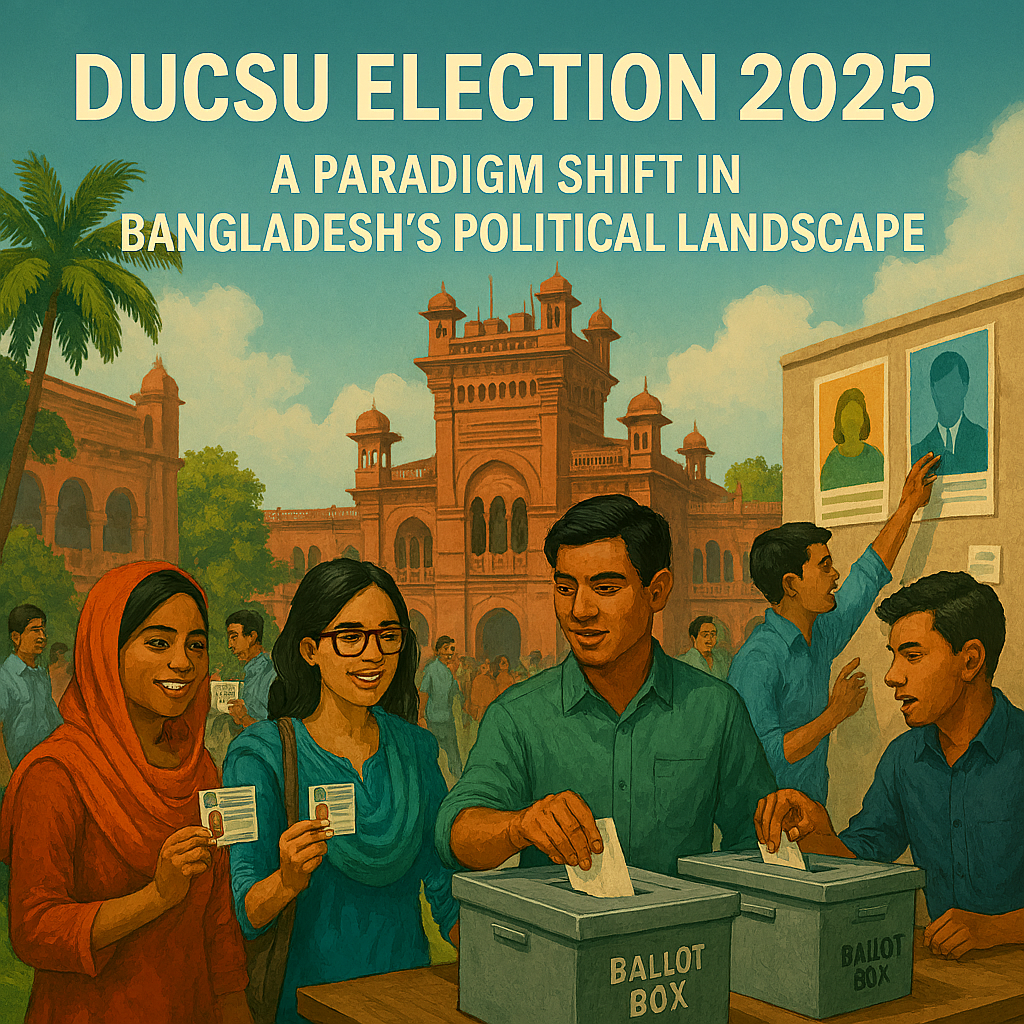PR System in Bangladesh: Fairer Democracy or Risky Shift?

Why Bangladesh Is Talking About PR System
In recent years, calls to adopt a PR system in Bangladesh have grown louder. After decades of the First-Past-The-Post (FPTP) method, many believe it fails to reflect the true will of the people. Smaller parties feel suppressed and many votes go “wasted” (i.e., they don’t contribute to seat allocation). (The Geopolitics)
PR promises that if a party gets, say, 30 % of votes, it should get about 30 % of seats. That appeals to fairness. (Daily Observer) But change is never simple. In this post, I’ll compare PR with FPTP, draw lessons from other nations, list advantages and disadvantages, and consider which is better for Bangladesh.
How FPTP Works vs How PR Works
FPTP (First-Past-The-Post): The Current System in Bangladesh
Under FPTP, Bangladesh has about 300 constituencies. Each elects one Member of Parliament. The candidate with the most votes in each area wins, even if they don’t receive an absolute majority. (Wikipedia)
This system gives strong majorities and local accountability. But it also means that many votes do not end up influencing seat counts.
PR (Proportional Representation): Basic Concept
In a PR system, seats in parliament are allocated so that parties’ share of seats corresponds to their share of total votes. (Wikipedia)
To make that work, elections usually take place in multi-member districts (more than one seat per district), or there is a compensatory system (mixed systems) that balances direct and proportional seats. (Wikipedia)
For example, Germany uses a Mixed-Member Proportional (MMP) system: some MPs are elected directly in districts, while others are from party lists to balance proportionality. (ResearchGate)
Examples Around the World: PR in Practice and FPTP Alternatives
Germany (MMP system)
Germany’s Bundestag elections combine district seats and proportional seats. Voters cast two votes: one for a local candidate, another for a party list. This ensures both geographical accountability and proportional fairness. (ResearchGate)
This model has allowed smaller parties to enter parliament, but governance often depends on coalitions.
New Zealand (Mixed-Member Proportional)
New Zealand adopted MMP in the 1990s. They combined local MPs (FPTP style) with list MPs to ensure proportionality. This helped increase representation of small parties and minorities.
Full PR Countries: Netherlands, Spain, etc.
Countries like the Netherlands or Spain use full PR systems. Voters pick parties, and seats are allocated purely proportionally. These systems often lead to multi-party legislatures and coalition governments.
FPTP Countries: India, UK, Bangladesh (currently)
India and the UK use FPTP. It often produces single-party majority governments, which can act decisively. But seats often do not proportionally reflect vote shares. For example, a party might get 35 % of national votes but 60 % of seats.
In Bangladesh’s 2001 election, BNP won 190 of 300 seats with 40.97 % vote share, while AL got 40.13 % votes but only 62 seats. (The Geopolitics)
Advantages of PR System
Fairer Representation, Less Wasted Votes
One of the strongest arguments for PR is that it reduces waste. Nearly all votes count towards seat allocation rather than being set aside as “losing votes.” (ACE Project)
Smaller parties and independent voices can secure seats even with modest vote shares, making parliament more pluralistic. (The Week)
Encourages Coalition & Consensus Politics
PR often forces parties to negotiate and form coalitions. This can improve cross-party dialogue and reduce winner-takes-all polarization. (ACE Project)
Better Reflection of Voter Preferences
Since seat share closely matches vote share, voters feel more fairly represented. It strengthens legitimacy. (ACE Project)
Encourages Issue Based Politics
With more parties potentially entering parliament, the focus may shift from personality or local dominance to policies, ideology, and platforms. (ACE Project)
Reduced Regional Bias
In FPTP, parties strong in certain regions dominate those seats, even if their national vote was not dominant. PR balances that out. (The Week)
Disadvantages and Risks of PR System
Coalition Instability & Weak Governments
One frequent criticism is that PR leads to fragmented parliaments and unstable coalitions. Small “kingmaker” parties can hold disproportionate power. (ACE Project)
Frequent government changes can hinder consistent policy implementation.
Weak Geographic Representation
In pure PR systems, representatives are not tied to local constituencies. Voters may feel they lack a direct MP who is responsible for their area. (ACE Project)
This can weaken accountability and connection between MPs and local voters.
Complexity & Voter Confusion
PR systems are more complex. Depending on type (open list, closed list, mixed), voters may have multiple votes or ranking systems. New systems require public education. (electoral-reform.org.uk)
Party Control and List Manipulation
In closed list PR systems, parties can control who gets priority on the list. That can reduce voter control over which individuals are elected.
Thresholds & Exclusion
Many PR systems set a minimum threshold (e.g. 5 %) for parties to enter parliament. Some small groups may still be left out.
Also, if parties field too many candidates relative to votes, it complicates distribution. (The Daily Star)
Which System Might Be Better for Bangladesh?
Strengths of FPTP (Why Some Defend It)
- Simplicity and familiarity: Voters already know it.
- Clear local MP: One representative per constituency, making accountability direct.
- Often produces majority governments, facilitating decisive governance. (LK INNOVATE)
Some argue Bangladesh needs strong centralized leadership to manage development projects. FPTP can deliver that.
Why PR Could Fix Current Flaws
- FPTP consistently produces disproportional outcomes. The 2001 example shows how close vote shares yielded wildly different seats. (The Geopolitics)
- Many smaller parties and voices are permanently excluded under FPTP.
- As Bangladesh’s politics becomes more fragmented, PR may better accommodate plurality rather than forcing a two-party duopoly.
A Hybrid / Mixed Model as Possible Compromise
Many experts suggest Bangladesh adopt a mixed system — combining FPTP and PR. This retains local MPs while also ensuring proportional fairness. (SSRN)
This model is less radical and may be more acceptable politically.
Challenges for Bangladesh in Adopting PR
Political Resistance and Power Dynamics
Major parties benefiting under FPTP may resist reform. Some already do. For example, BNP has expressed skepticism of full PR in Bangladesh. (The Business Standard)
Securing political consensus is a steep challenge.
Electoral Infrastructure and Legal Reform
Switching systems requires changes in election law, constituency boundaries, voting machines, training, and public awareness.
Sociopolitical Culture and Party Structures
Bangladesh’s parties often center on personalities, local networks, and strong constituencies. PR demands stronger internal party structures, transparent lists, and ideological platforms — areas which need development.
Voter Education
Introducing a new system demands large scale voter education campaigns to avoid confusion, spoiled ballots, or decline in participation.
Final Thoughts: What Bangladesh Should Aim For
The debate over PR system in Bangladesh is not about idealism alone. It is about correcting structural flaws in representation and giving voice to wider diversity.
A full PR switch risks instability and loss of local linkages. But incremental or mixed approaches could work better: preserve constituency links while making parliament more proportional.
Given global experiences, a hybrid PR / FPTP model may suit Bangladesh best. It balances fairness and stability, protects local accountability, and broadens representation.
If Bangladesh proceeds carefully — building institutions, reforming party processes, educating voters — PR could help transform its democracy. The question is not just whether Bangladesh can adopt PR, but whether Bangladesh can adapt its politics to make PR meaningful.







